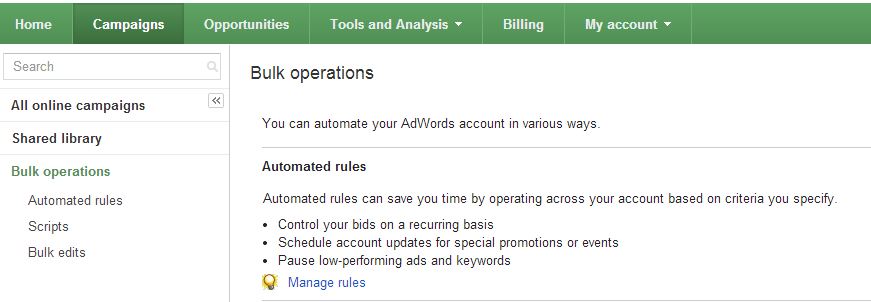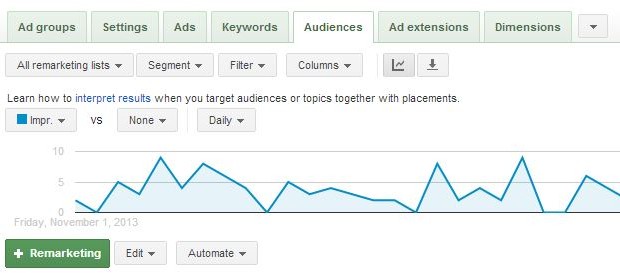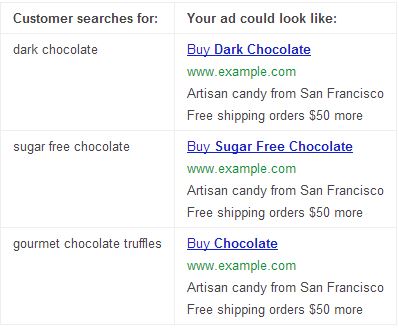
7 Things You Didn’t Know You Could Do with Google Adwords
Google Adwords is a very powerful tool packed with lots of features to help you get the most out of your search engine marketing efforts. Today we break down some lesser known but highly valuable Google Adwords features to help you maximize your campaign performance.
1) Adwords Bid Strategies
Having trouble reaching or maintaining certain acquisition goals? If so, it might be time to check out Adwords Bid Strategies. Since reaching certain goals or maintaining conditions within your Google Adwords campaigns can require constant attention, utilizing bid strategies can help automate some of these tasks for you. As Google sums it up, “Flexible bid strategies automatically set bids to optimize for your performance goals across specific campaigns, ad groups, and keywords.” You can manage bids with specific goals in mind: Enhanced CPC, Target Search Page Location, Target CPA, Maximize Clicks, and Target ROAS. For more details on each of the different bid strategies, you can get more info here.
2) Adwords Bid Rules
Adwords Bid Rules are similar to bid strategies in some ways. They’re both meant for automation of your account, but you set bid rules versus allowing Google to make changes for you based on your end goals. The bid rules option can be found under the bulk operations section underneath the Shared Library. Automated bid rules can be used for a variety of tasks but some of the more common uses include scheduling ads, raising/lowering keywords bids based on certain criteria, as well as getting alerts when specific conditions are met within your Adwords account.
3) Shared library
The shared library is where you can find a repository of “lists” which can be shared across your account to modify specific attributes of a campaign. You can share a variety of list including: ads, audiences, bid strategies, budgets, negative keywords and placement exclusions. By simply creating these lists within the library, you can easily share it with other campaign and ad groups in the account. Instead of manually creating or uploading each list for each campaign, quickly share them across the campaigns you need with the Shared Library.
4) RLSA – Remarketing Lists for Search Ads
We’ve mentioned RLSA before in a previous post but many people still aren’t aware of this retargeting method. As our post mentioned, RLSA gives you the ability to retarget or “re-show” your search ad to someone who has been to your site before. You can adjust your bid, less or more for that particular user, depending on your paid search strategy. For example, if someone has already visited your site and is searching for your term, this would be a good time to bid less since odds are, they’re going to click on your paid ad again regardless, so why not get them at a lower cost? If that user is searching for a product you and a competitor offer, it would be a good idea to bid more for that user because they’re still in that discovery phase. To enable the RLSA option, simply go to a specific campaign where you’d like to utilize the feature, and click on the audience section. After you’ve done that, click on the green remarketing button and start adding audiences to the ad groups you’d like to target.
5) Auction Insights Report
The Auctions Insights Report gives you helpful information when it comes to seeing how you stack up against your competitors in the marketplace. When drilling down to a specific keyword or set of keywords, click on the “details” button to bring up the auction insights menu. After selecting your keywords, you will be able to see things like Impression Share, Avg. Position, Position Above Rate, Overlap Rate, and Top of Page Rate. It’s always a good idea to see how much overlap you have with your competitors.
6) Ad Extensions
Ad Extensions, as also previously discussed, are a quick and easy way of offering more information to searchers. The more information you can offer them at one time is generally better since you’re competing against at least six other text ads at a time. Offering them additional site information, contact info, reviews, and social popularity with sitelinks can make all the difference for a click. You can also utilize day parting, which allows you to show different, more relevant extensions at certain times of the day. To utilize ad extensions, simply click on the ad extensions tab within the campaign section of your account and start creating.
7) Dynamic Keyword Insertion
Dynamic Keyword Insertion is another effective way to cut down on creating ad headlines, as well as give you the opportunity to more closely match a user’s query. This creates more relevancy to the customer, increasing the likelihood that your ad will be clicked. Dynamic keyword insertion is fairly easy to use. Just type the necessary code and the keywords into the ad headline area and Google will automatically fill it with the user’s query that matches your keyword like you see in Google’s example below.
Google Adwords has tons of features that can help move your search engine marketing efforts forward. Not all of these methods work for all businesses, but it’s a good idea to check them out and find what works for your business.
Got any Google Adwords features you love? Share in the comments.
© 2013 – 2018, Contributing Author. All rights reserved.







